The 650B Ancestor: René Herse Randonneur
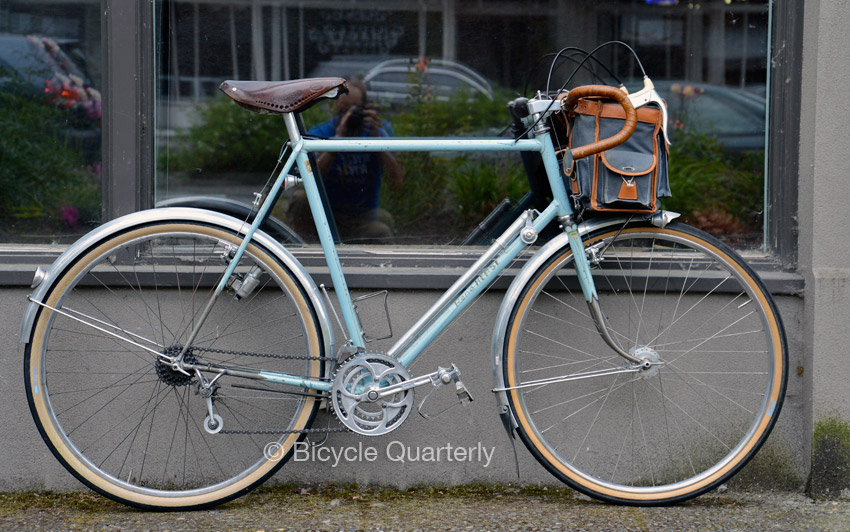
I had the opportunity to ride a favorite classic René Herse again recently. This is the bike that started the current trend of 650B bikes in North America. It’s the bike that made us re-evaluate front-end geometries and wide tires. It’s truly the ancestor of the bikes we ride today, and it has been hugely influential. I first rode this 1952 René Herse more than a decade ago. I didn’t have very high expectations. Wide tires at low pressures? Must be slow. “Suicide” front derailleur? Must be difficult to shift. Huge amount of fork rake? A clear sign they didn’t understand front-end geometry back then. Today, we smile about these assumptions, but back then, they were deeply ingrained in all of us. Imagine my surprise then when the old Herse was faster than my custom bike. It handled better and was more fun to ride. I set a few personal bests on this bike, and to this day, it holds the fastest time on the challenging “Three Volcano 300 km” brevet. The old Herse made me realize the merits of 650B tires. I talked about this bike with Grant Petersen from Rivendell, who took up the idea of 650B tires. Then Kogswell asked me for a bike design, and I modeled the P/R’s low-trail geometry on this Herse. And the rest is history… Seeing and riding the bike again was a lot of fun. Underneath the lovely patina of its 62 years, it amazed me once again how aesthetically and functionally resolved this bike is.
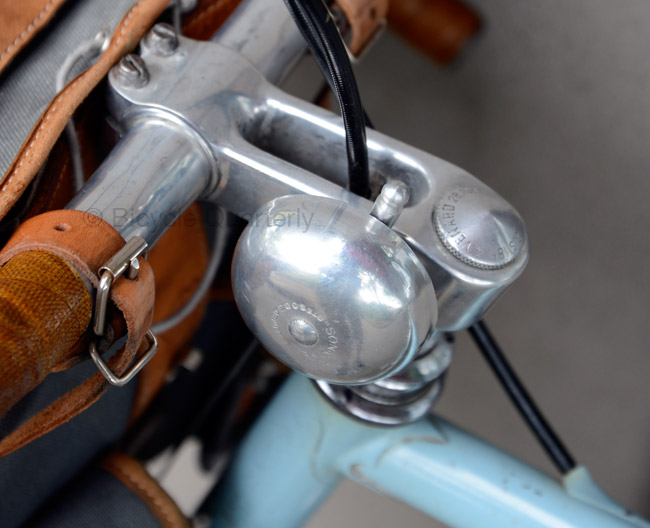
The Herse stem still is one of the most beautiful ever made. It’s also quite lightweight. The bell is directly attached, and the original owner’s name remains engraved on the stem cap.
 The René Herse crank has become a more common sight these days, but it’s still one of the most beautiful ever made. Too bad about the 38-tooth middle ring, which is the largest ring that didn’t always have the triangular cutouts. I think it would look a lot nicer with the cutouts, so we added them to the 38-tooth rings on the current-production René Herse cranks.
The René Herse crank has become a more common sight these days, but it’s still one of the most beautiful ever made. Too bad about the 38-tooth middle ring, which is the largest ring that didn’t always have the triangular cutouts. I think it would look a lot nicer with the cutouts, so we added them to the 38-tooth rings on the current-production René Herse cranks. 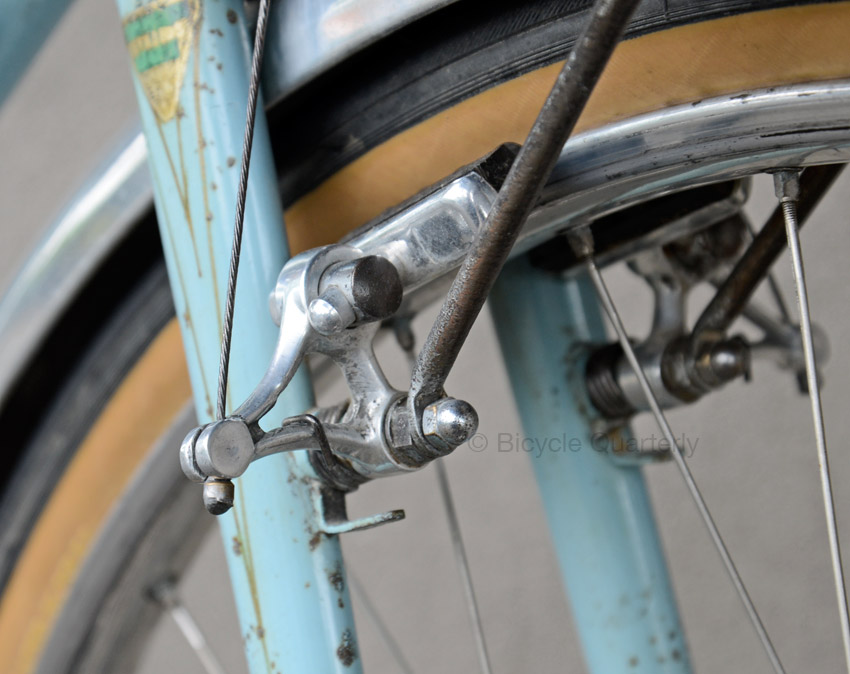
The Herse cantilever brakes are among the lightest ever made, yet they work very well. Details like the rack attachment to a forward extension of the brake attachment bolt are elegant and functional. (Several companies now offer copies of these bolts.) Every component and every bolt is only as large as it needs to be. This doesn’t only save weight, but also makes the bike so elegant.
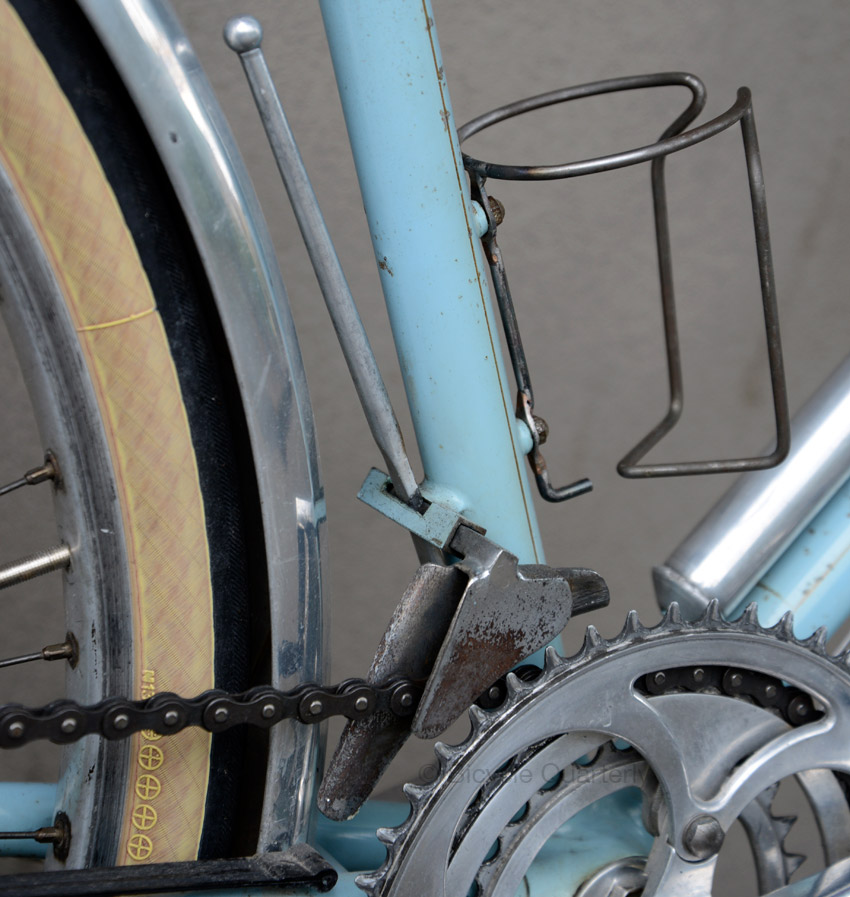
The Herse front derailleur shifts very smoothly, even on a triple. At first, I found it difficult to move the chain from the big to the middle chainring – it went straight to the small ring. After a few shifts, it became second nature, and I never thought about it again.
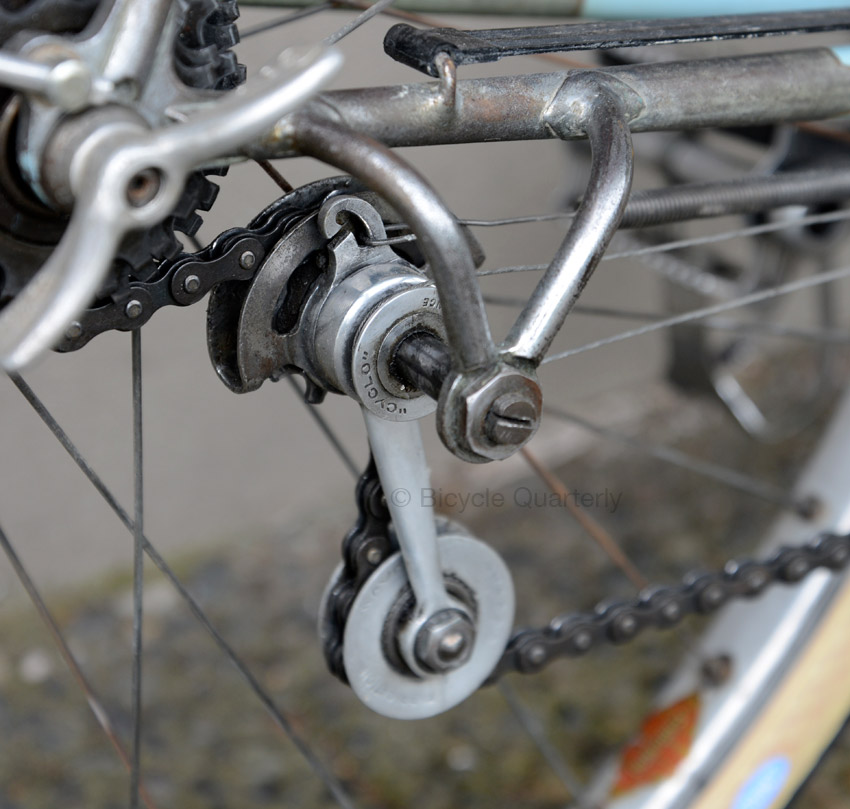
The Cyclo rear derailleur has an aesthetic purity that must have appealed to René Herse. It shifts surprisingly well. This one needed a little lubrication: Front shifts tended to rotate the entire derailleur on its support, rather than just the chain tensioner arm. The result was an unexpected rear shift every other time I shifted on the front. When I rode the bike years ago, it didn’t have that problem…
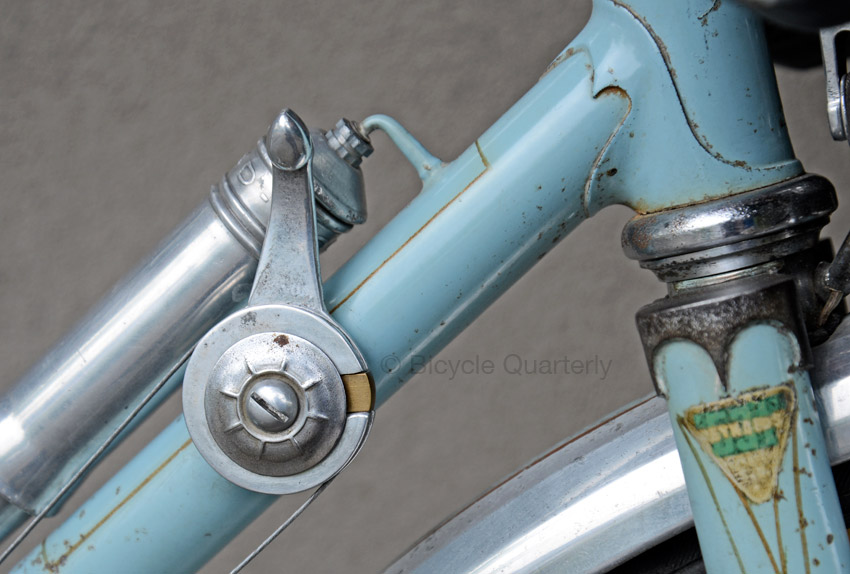
Herse made an eccentric shift lever, since the Cyclo derailleur moves inward and outward as you shift. Otherwise, the shifter cable goes slack on the largest cogs. One thing that is easy to miss in this photo: There is no lighting wire going from the fork to the frame. The current is transmitted via a carbon brush inside the head tube.
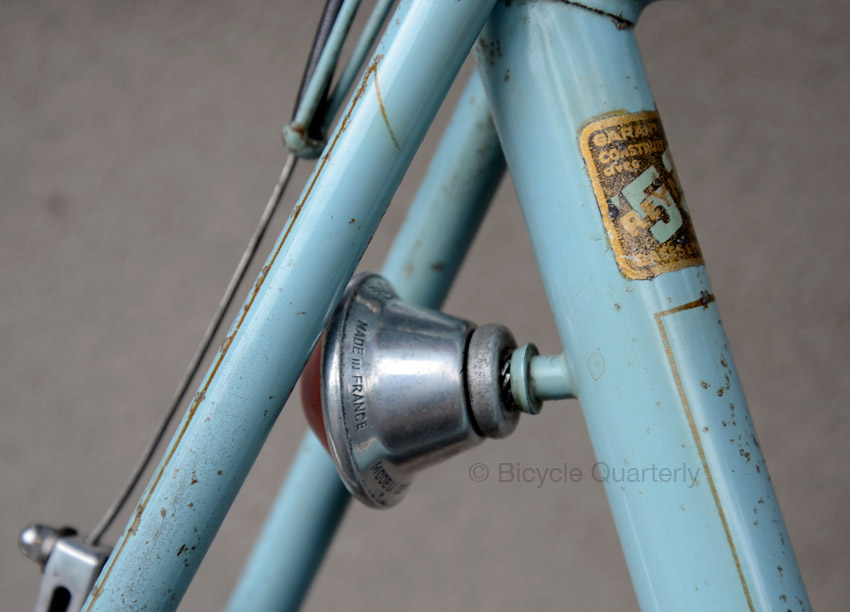
You can see where the inspiration for the Compass taillight came from! We had to modify the shape so it looked good with a flat reflector instead of the curved lens of this old JOS taillight. You also notice how the rear brake cable runs parallel to the seatstay. That is one of the reasons the classic Herse bikes look so light and elegant.
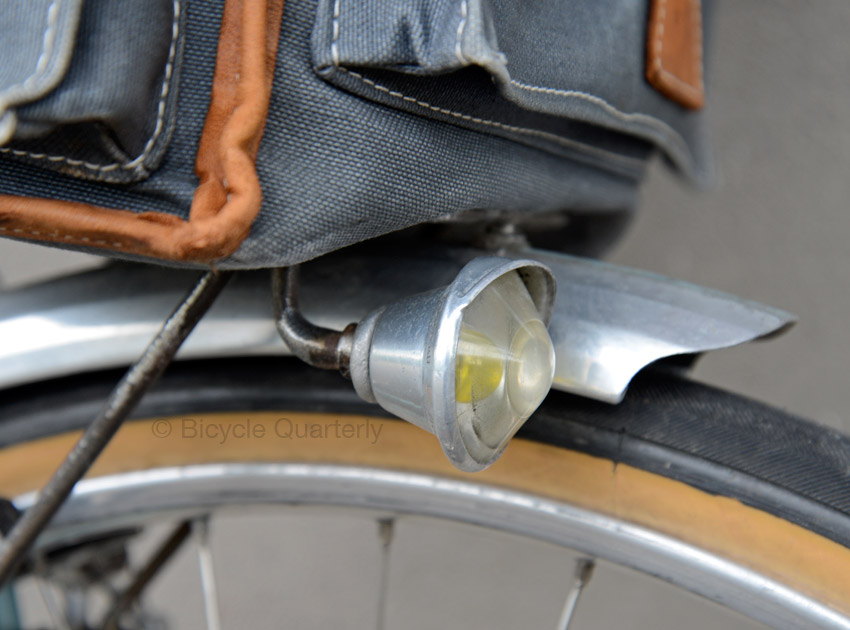
I wish somebody would make a headlight that was nearly as pretty as the old JOS. This is Herse’s special version, with no mounting bracket, since it attaches directly to the support on the rack. The lighting wire runs inside the rack tubes.
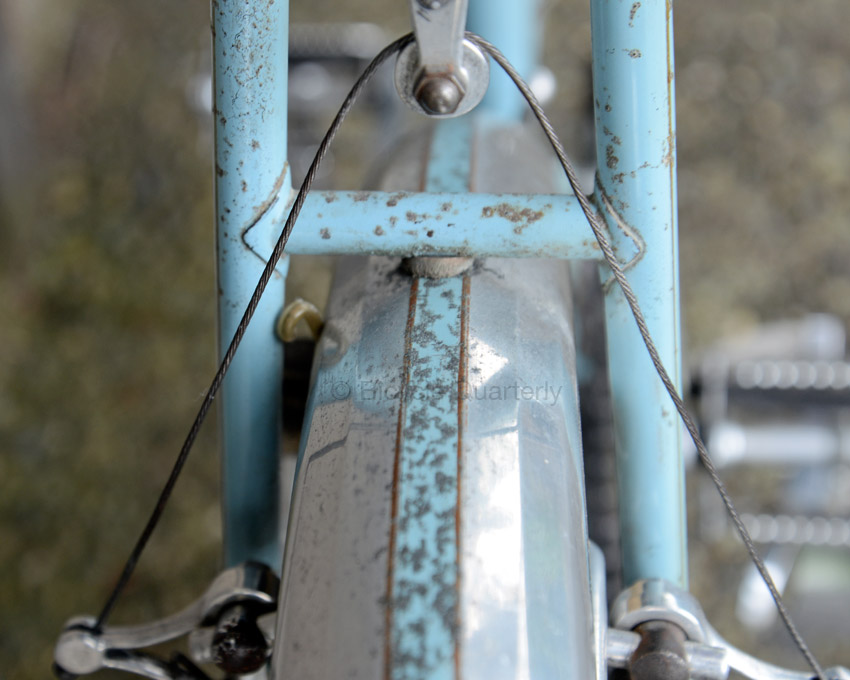
The only lighting wire that is exposed on the entire bike is at the rear. Here, it leaves the fender and immediately enters the seatstay. A little further down, it exits the seatstay at the bottle generator. All other lighting wires are internal. I love the blue line painted on the “Le Paon” fenders, outlined in gold.
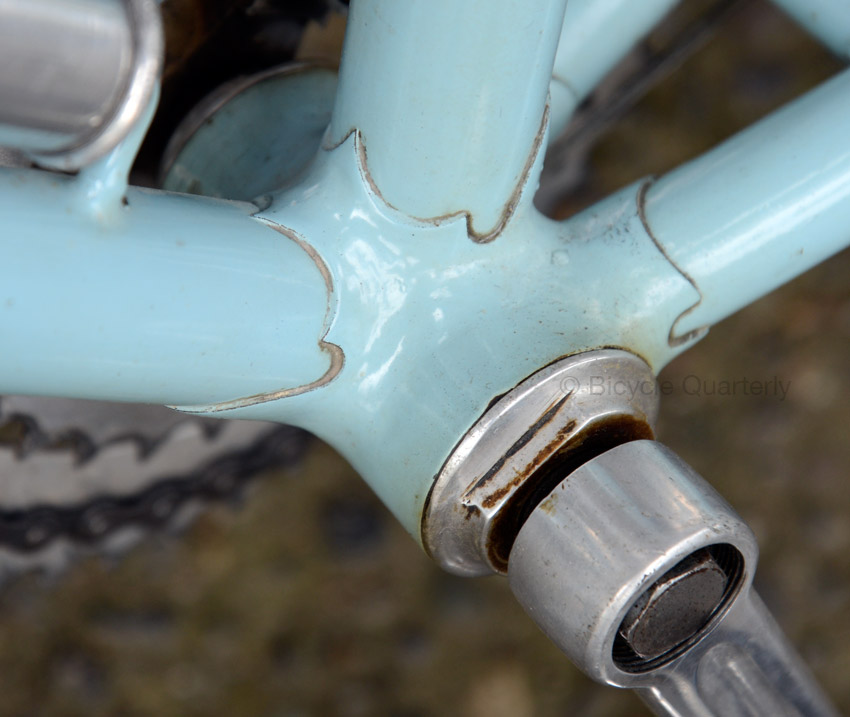
The bottom bracket shell doesn’t look special, until you realize that it was fabricated from pieces of tubing that were welded together. On the inside, there are shoulders to locate the pressed-in SKF cartridge bearings for Herse’s custom bottom bracket. The bearings have never been overhauled in the bike’s 62-year life, yet they still spin smoothly.
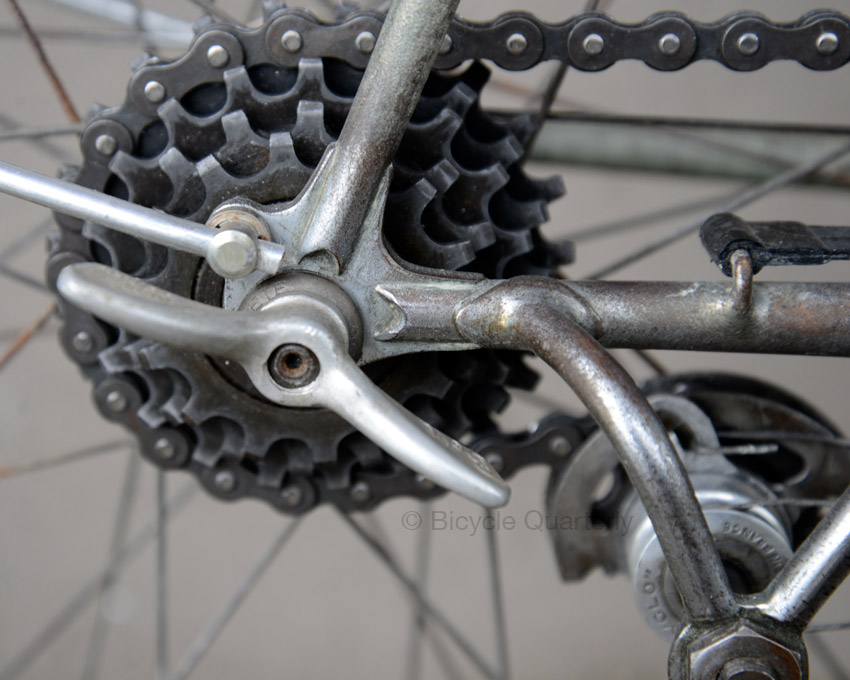
This photo epitomizes the craft of René Herse for me. The stays extend as far as possible toward the rear axle. As a result, the custom-made dropouts are tiny, which saves significant weight and also makes the frame stronger. The workmanship is close to perfect. (The slight rounding-off you see on the stay ends happened during the polishing for chrome-plating.)
Notice how fender eyelet is placed on a smaller radius than the smallest freewheel cog. That way, the nut that protrudes on the inside doesn’t interfere with the chain on the smallest cog. Few makers, past or present, have resolved details like these in such a neat and unobtrusive way.
So how was it to ride the 1952 Herse again? When I first rode it 11 years ago, it was a revelation, but today, it feels surprisingly familiar. The main reason is that my current bike is basically an updated version of the 1952 Herse. (So are about a dozen test bikes I’ve ridden for Bicycle Quarterly.) The differences are slight: My own bike feels like a 105% version of the 1952 machine, with slightly more flexible fork blades, a slightly more responsive frame, slightly better shifting (my Nivex vs. the Herse’s Cyclo) and slightly better brakes (centerpulls vs. cantilevers). Even the weight of the 1952 Herse (11.2 kg/24.8 lb including the pump) remains more than competitive for a modern bike that is fully equipped.
I rode the bike on a beautiful spring day. Mark and I headed out on our “standard” loop around the North End of Lake Washington. We rode up Juanita Hill, and it was obvious that Mark was feeling strong that day. We raced up the hill with abandon, and more than once I felt like surrendering. But somehow the bike kept going, and toward the top, I even felt good enough to try to outsprint Mark. I managed a clean shift with the Cyclo derailleur, but when I rose out of the saddle, my legs almost buckled, and Mark pulled away. Can’t blame the old bike for that!
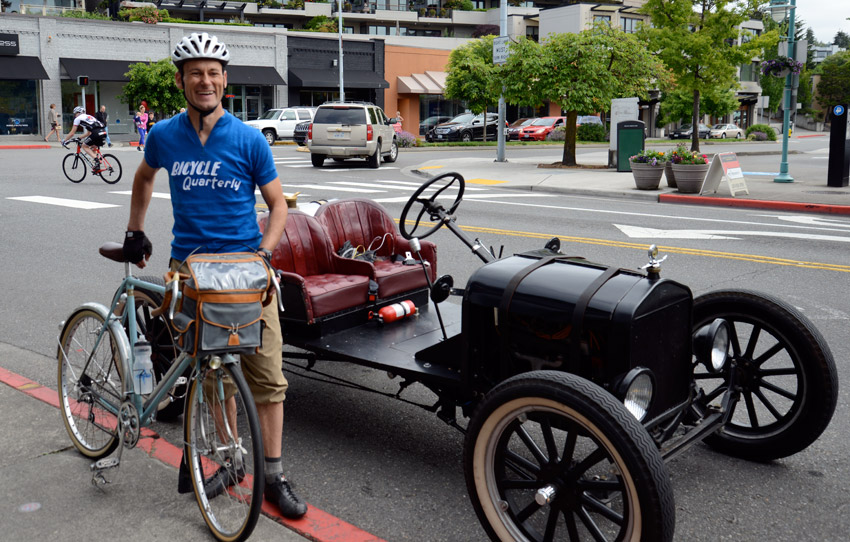
We stopped at a café in Kirkland, and just as we were leaving, a Ford Model T racer pulled up. Now here was a machine that was even older than this Herse. However, unlike the Herse, which easily holds its own with modern machines, I doubt the Model T holds any course records today!
- To find out more about René Herse, we recommend the book René Herse: The Bikes • The Builder • The Riders. The 1952 machine is one of 20 classic René Herses shown in the books with beautiful studio photographs.


